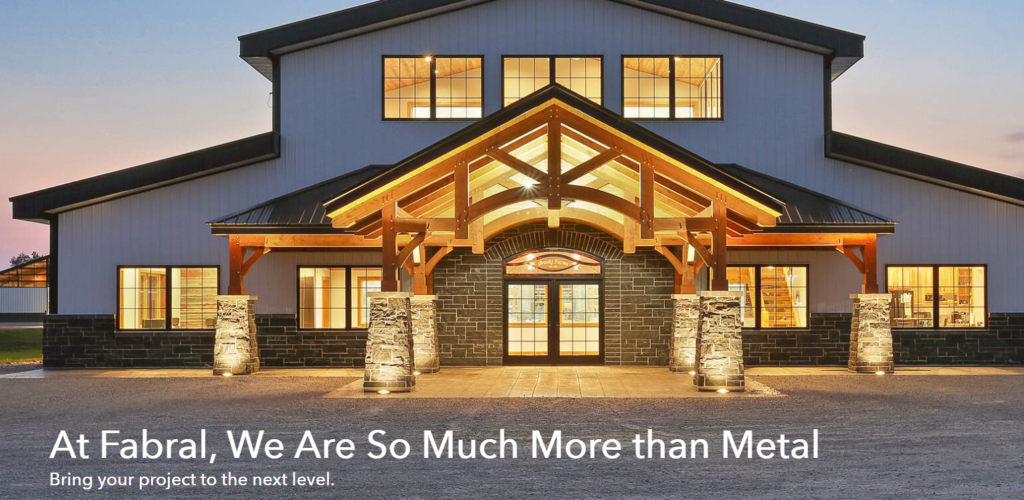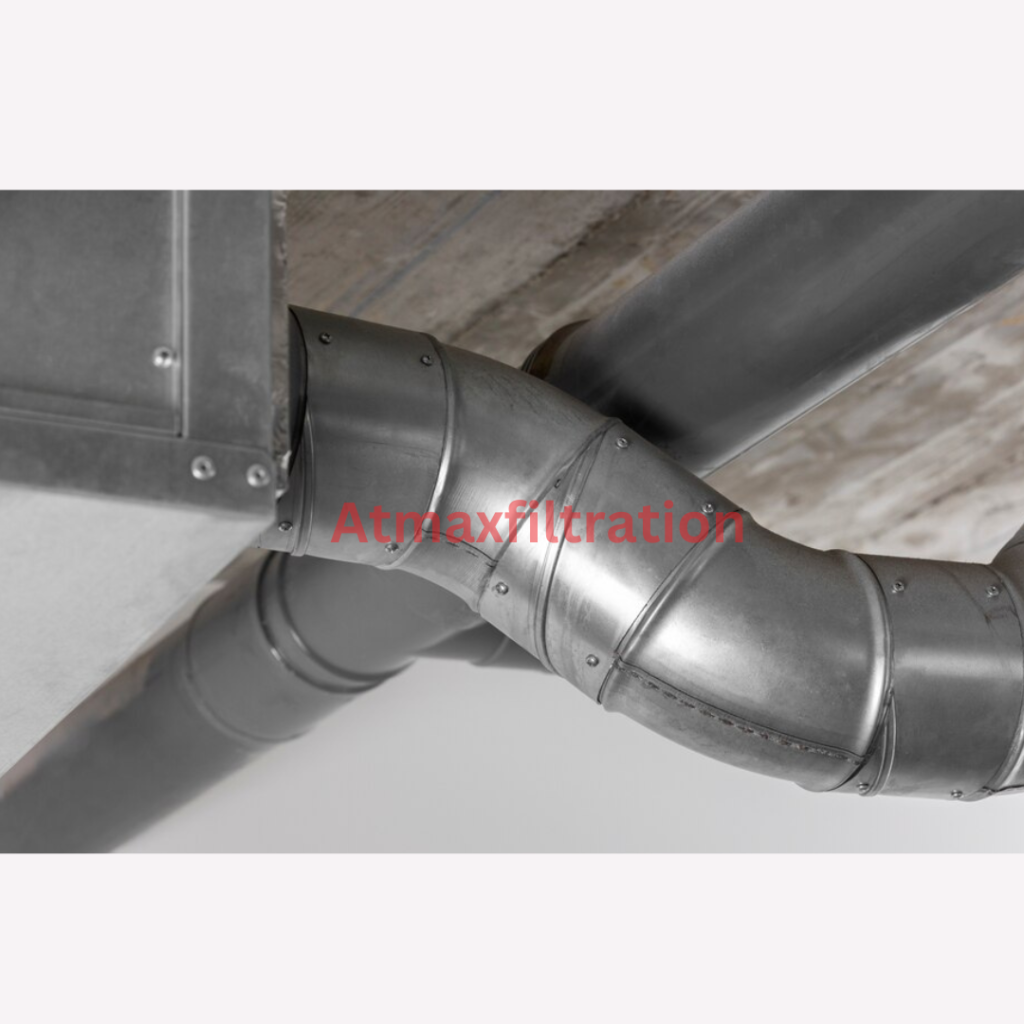In industrial facilities, efficient ventilation and air management are crucial for maintaining a safe and productive work environment. One of the critical components that make this possible is industrial ductwork. Industrial ductwork fabrication plays a significant role in ensuring that the air quality inside factories, warehouses, and other industrial settings remains optimal.
What is Industrial Ductwork Fabrication?
Industrial ductwork fabrication is the process of designing, ductwork manufacturing, and installing a network of ducts that form the framework for air ductwork fabrication and ventilation in industrial buildings. These ducts are typically made from sheet metal, such as galvanized steel or aluminum, due to their durability and resistance to harsh industrial environments. The primary purpose of industrial ductwork is to transport air, fumes, dust, and other airborne pollutants away from the workspace to create a safe and healthy environment for workers.
Importance of Industrial Ductwork Fabrication
1. Worker Health and Safety: In industrial settings, various processes can generate harmful fumes, dust, and pollutants. Properly designed and fabricated ductwork ensures that these contaminants are efficiently extracted from the workspace, reducing the risk of respiratory issues and other health problems among workers.
2. Indoor Air Quality: Good indoor air quality is essential for the well-being and productivity of employees. Industrial ductwork plays a critical role in maintaining a steady supply of fresh and clean air throughout the facility, removing stale air and odors.
3. Compliance with Regulations: Industrial facilities must adhere to various safety and environmental regulations. Properly fabricated ductwork ensures the ventilation system meets the required standards, helping the facility avoid penalties and legal issues.
4. Equipment Longevity: Effective ventilation not only benefits workers but also extends the lifespan of industrial equipment. By removing airborne particles and regulating temperature and humidity levels, ductwork helps protect machinery from damage and corrosion.
5. Energy Efficiency: An efficient ductwork system can significantly reduce energy consumption by ensuring that conditioned air reaches its intended destination with minimal loss. Well-fabricated ducts minimize air leaks, thereby optimizing the performance of heating, ventilation, and air conditioning (HVAC) systems, ultimately leading to lower energy costs.
6. Productivity and Comfort: Adequate ventilation and temperature control contribute to the overall comfort and well-being of employees. A comfortable work environment boosts morale and enhances productivity, leading to better business outcomes.
While industrial ductwork fabrication is a well-established process, it comes with its own set of challenges
1. Customization: Each industrial facility has unique requirements, making custom fabrication necessary. This demands expertise in design and fabrication to meet specific needs effectively.
2. Precision and Tolerance: Ductwork must be fabricated with precision and tight tolerances to ensure seamless connections and efficient airflow.
3. Compliance with Regulations: Compliance with safety and environmental regulations is critical, as improper fabrication could lead to hazardous conditions and legal consequences.
Industrial Ductwork Fabrication Strategies
Industrial ductwork fabrication can be a complex and challenging process that involves designing, manufacturing, and installing duct systems for various industrial applications. Overcoming these challenges is crucial to ensure the efficiency, safety, and effectiveness of the ductwork.
Here are some strategies to address common challenges in industrial ductwork fabrication
1. Accurate Design and Engineering: One of the primary challenges in ductwork fabrication is ensuring accurate design and engineering. Improperly designed duct systems can lead to inefficiencies, increased energy consumption, and poor airflow distribution. To overcome this challenge, engage experienced engineers and use advanced software tools for precise design and sizing calculations.
2. Material Selection: Choosing the right materials for duct fabrication is essential for durability and performance. Industrial ducts may need to withstand high temperatures, corrosive environments, or specific industry requirements. Ensure that the selected materials meet the necessary standards and regulations while considering factors like thermal conductivity, chemical resistance, and strength.
3. Quality Control: Maintaining high-quality standards throughout the fabrication process is crucial to avoid defects and ensure long-lasting performance. Implement strict quality control procedures, conduct regular inspections, and perform testing to verify the integrity of the fabricated ducts.
4. Precision Fabrication: Industrial ductwork often involves intricate shapes and tight tolerances. Precision fabrication is essential to ensure that all components fit together seamlessly during installation. Use advanced fabrication technologies like computer numerical control (CNC) machines to achieve accurate results.
5. Compliance with Codes and Standards: Industrial ductwork fabrication must adhere to specific industry codes and standards, such as those set by ASHRAE, SMACNA, or NFPA. Ensure that all aspects of the fabrication process, including materials, installation, and safety measures, comply with the relevant codes and regulations.
6. Handling Large-Scale Projects: In industrial settings, ductwork fabrication may involve large-scale projects with complex requirements. Effective project management is essential to coordinate tasks, allocate resources, and meet project timelines. Employ experienced project managers to oversee and streamline the fabrication process.
7. Safety Measures: Safety is of utmost importance in industrial ductwork fabrication, especially in heavy industries or hazardous environments. Implement comprehensive safety protocols, provide appropriate training to workers, and use personal protective equipment (PPE) to minimize the risk of accidents and injuries.
8. Efficient Installation: Fabricated ductwork must be installed correctly to ensure optimal performance. Collaborate closely with installation teams to provide them with clear instructions and support during the installation process.
9. Communication and Coordination: Effective communication and coordination between various stakeholders, such as designers, engineers, ductwork fabricators, and installers, are crucial for the success of ductwork fabrication projects. Regular meetings and updates can help prevent misunderstandings and ensure everyone is on the same page.
10. Continuous Improvement: Embrace a culture of continuous improvement to learn from past projects and address any issues or inefficiencies that arise during fabrication. Collect feedback from clients and stakeholders to refine fabrication processes and deliver better results in future projects.
By addressing these challenges proactively and implementing effective strategies, industrial ductwork fabrication can become more efficient, cost-effective, and successful in meeting the specific needs of industrial applications.
Industrial ductwork fabrication is a complex yet indispensable aspect of modern industrial infrastructure. Properly designed and fabricated ductwork ensures that workers have access to clean air, while also promoting energy efficiency and compliance with regulations. As industries continue to prioritize worker safety and environmental responsibility, the demand for well-designed and accurately fabricated ductwork will remain significant.
Collaborating with experienced professionals who possess the technical expertise and adherence to industry standards is crucial in achieving effective industrial ductwork fabrication and, consequently, more growth for industrial enterprises.
What is the process of duct fabrication?
The industrial ductwork fabrication process involves several key steps to create custom ductwork systems for various industrial applications. Here’s an overview of the typical fabrication process:
Design and Planning
The process begins with careful design and planning. Engineers and designers work closely with clients to understand their specific needs and requirements. Detailed design drawings and specifications are created to ensure the ductwork meets industry standards and regulations.
Material Selection
The choice of materials is crucial in ductwork fabrication. Common materials include galvanized steel, stainless steel, aluminum, and sometimes specialized materials like fiberglass for specific applications. Material thickness is selected based on the ductwork’s intended use and environmental factors.
Cutting and Shaping
Once the design is finalized, sheets or coils of the chosen material are cut into the required shapes and sizes. Advanced cutting machinery, such as laser cutters or plasma cutters, is often used to achieve precision.
Assembly
Sections of ductwork are assembled using welding, riveting, or adhesive bonding, depending on the material and design. Joints and seams must be securely sealed to prevent air leakage.
Flange and Connector Installation
Flanges and connectors are added to the ductwork to facilitate connections to other system components, such as HVAC units, fans, or exhaust systems. Proper sealing and gasket installation are essential to maintain system efficiency.
Insulation (Optional)
In some cases, insulation is applied to the ductwork to regulate temperature, reduce condensation, and minimize heat loss or gain. Insulation materials can include fiberglass, foam, or other thermal insulating materials.
Quality Control
Rigorous quality control measures are implemented throughout the fabrication process. Inspections and tests are conducted to ensure that the ductwork meets design specifications, is free of defects, and complies with safety standards.
Coating and Finishing
Depending on the material and environment, ductwork may be coated with protective finishes to prevent corrosion and enhance durability. This can involve painting, galvanizing, or applying anti-corrosion coatings.
Testing and Balancing
Before installation, ductwork systems are often tested for air leakage, pressure, and airflow balance. Adjustments are made as needed to ensure optimal performance.
Installation
After fabrication and testing, the ductwork is transported to the installation site. Skilled technicians and contractors install the ductwork according to the design specifications and connect it to the broader industrial system.
Maintenance and Inspection
Regular maintenance and inspections are essential to ensure the long-term efficiency and safety of the ductwork system. Any signs of wear, damage, or deterioration should be promptly addressed.
What materials can be used to fabricate ductwork?
Various materials can be used to fabricate ductwork, and the choice of material depends on factors such as the specific application, environmental conditions, budget, and performance requirements. Common materials used in ductwork fabrication include:
- Galvanized Steel: Galvanized steel is one of the most widely used materials for ductwork. It is durable, corrosion-resistant, and can withstand high temperatures. Galvanized steel ducts are often used in commercial and industrial HVAC systems.
- Stainless Steel: Stainless steel is highly resistant to corrosion and is suitable for applications where hygiene and cleanliness are essential, such as in pharmaceutical or food processing facilities. It is also used in corrosive environments.
- Aluminum: Aluminum ducts are lightweight, easy to install, and resistant to corrosion. They are commonly used in residential and commercial HVAC systems and are a cost-effective option.
- Fiberglass Reinforced Plastic (FRP): FRP ducts are used in corrosive environments, such as chemical processing plants or wastewater treatment facilities. They are resistant to chemicals and have excellent corrosion resistance.
- PVC (Polyvinyl Chloride): PVC ducts are suitable for residential and commercial HVAC systems. They are lightweight and cost-effective but may not be suitable for high-temperature applications.
- Duct Board: Duct board is a pre-insulated material made of fiberglass strands bonded with a resin. It is commonly used for fabricating ducts in residential HVAC systems and offers insulation properties.
- Flexible Ducting: Flexible ducts are typically made of a combination of materials, including a flexible inner core and an outer insulation layer. They are used when ductwork needs to be routed through tight or curved spaces.
- Fabric Ducting: Fabric ducts are made of textile materials and are used in applications where air distribution needs to be evenly diffused. They are often used in commercial and industrial settings.
- Mild Steel: Mild steel is another option for ductwork fabrication, but it is less corrosion-resistant than galvanized steel. It may require additional coating or treatment for protection.
- Copper: Copper ductwork is less common but may be used in specialized applications. It is known for its excellent heat conductivity and resistance to microbial growth.
Top 5 Industrial Ductwork Fabrication Companies in the US
Atmax Filtration

Atmax Filtration is a leading manufacturer of industrial ductwork and other air filtration products. The company is headquartered in Houston, Texas, and has over 30 years of experience in the industry. Atmax Filtration offers a wide range of ductwork products, including rectangular duct, round duct, spiral duct, and more. The company also offers a variety of customization options to meet the specific needs of its customers.
Air Innovations

Air Innovations is a leading manufacturer of industrial HVAC products, including ductwork, fans, and coils. The company is headquartered in Tampa, Florida, and has over 40 years of experience in the industry. Air Innovations offers a wide range of ductwork products, including rectangular duct, round duct, spiral duct, and more. The company also offers a variety of customization options to meet the specific needs of its customers.
Ductmate
Ductmate is a leading manufacturer of industrial ductwork and other air handling products. The company is headquartered in Lancaster, Pennsylvania, and has over 50 years of experience in the industry. Ductmate offers a wide range of ductwork products, including rectangular duct, round duct, spiral duct, and more. The company also offers a variety of customization options to meet the specific needs of its customers.
Fabral Fabral

Fabral Fabral is a leading manufacturer of industrial and commercial ductwork. The company is headquartered in Lancaster, Pennsylvania, and has over 50 years of experience in the industry. Fabral offers a wide range of ductwork products, including rectangular duct, round duct, spiral duct, and more. The company also offers a variety of customization options to meet the specific needs of its customers.
Sheet Metal Specialties

Sheet Metal Specialties is a leading manufacturer of custom industrial ductwork and other air handling products. The company is headquartered in Grand Rapids, Michigan, and has over 40 years of experience in the industry. Sheet Metal Specialties offers a wide range of meta ductwork fabrication products, including rectangular duct, round duct, spiral duct, and more. The company also offers a variety of customization options to meet the specific needs of its customers.
Conclusion
Industrial ductwork fabrication is a critical component of efficient ventilation systems. By carefully designing and fabricating ductwork systems, industrial facilities can ensure that their employees have a safe and healthy work environment, and that their equipment and processes are operating optimally.
When choosing an industrial ductwork fabrication company, it is important to consider factors such as experience, expertise, and reputation. It is also important to make sure that the company is able to meet your specific needs and requirements.

